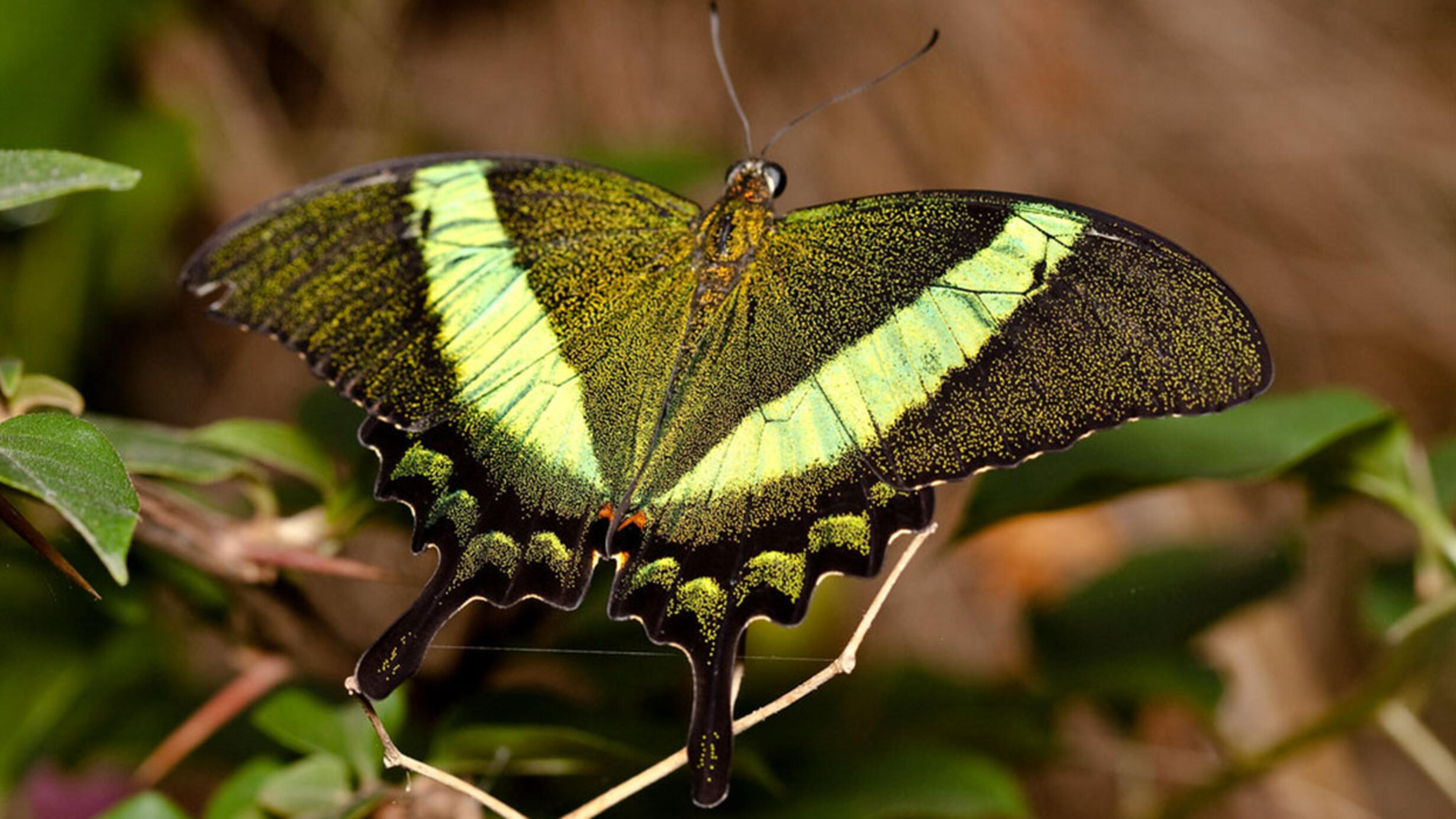 Viewed from certain angles, the bands on the emerald swallowtail's wings appear blue or yellow, as seen here.
Viewed from certain angles, the bands on the emerald swallowtail's wings appear blue or yellow, as seen here.Courtesy of S. Begin/Flickr
The emerald swallowtail (Papilio palinurus) is sometimes called a banded peacock, but it might just as easily be called a chameleon. Like the shade-shifting lizard, the emerald swallowtail changes color depending on the angle of the light, and it has a strikingly disparate appearance from one side to the other.
The bright bands on the butterfly’s generally dark green upper side aren’t caused by pigments but by the surface of unique microstructures in the scales on its wings. When the scales reflect blue and yellow light, their tight arrangement allows the colors to mix together and be perceived as the iridescent green bands from which the butterfly takes its common name.
Gordon E. Robertson/Wikimedia Commons
But when its wings are viewed from another angle, the human eye will see the bands as only yellow or blue, respectively. And viewed from below, an emerald swallowtail looks like a completely different butterfly. Its underwing or ventral side is black and gray with blue, orange, and white spots—coloration typical of the upper side of other swallowtail butterfly species, which likely helps the insect to camouflage itself from predators.
Learn how some species of butterflies use bright colors and distinctive wing patterns to warn off predators.
The emerald swallowtail has a wingspan of up to 4 inches (10 cm) and belongs to the family Papilionidae. These large, colorful, mostly tropical butterflies include the largest in the world, such as the birdwing butterflies of the genus Ornithoptera.
Read about another species in the family Papilionidae, which also happens to be the largest butterfly in the world: Queen Alexandra's Birdwing (Ornithoptera alexandrae).
Native to Southeast Asia, the emerald swallowtail is found primarily in Burma, Peninsular Malaysia, Sumatra, Borneo, Indonesia, and the Philippines. The emerald swallowtail’s caterpillars—like those of the tiger, spicebush, anise, giant, and black swallowtails—resemble bird droppings when small. These cleverly camouflaged larvae, like all swallowtail caterpillars, have an osmeterium: a forked-shaped gland that emits a foul smell and can also be extended when it rears its head back in response to a threat. They feed on citrus trees, making the species unpopular with citrus growers.
But the emerald swallowtail is a perennial favorite in live butterfly displays—including ours, The Butterfly Conservatory, overseen by Curator David Grimaldi and open seasonally each fall through spring.
Members enjoy free tickets for The Butterfly Conservatory. (Log in to your profile first to get Member pricing.)
A version of this story appeared in the Fall 2019 issue of the Member magazine, Rotunda.